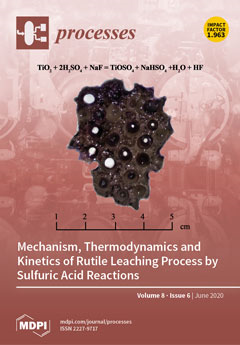Phenol degradation by
Pseudomonas putida BCRC 14365 was investigated at 30 °C and a pH of 5.0–9.0 in the batch tests. Experimental results for both free and immobilized cells demonstrated that a maximum phenol degradation rate occurred at an initial pH of 7. The peak value of phenol degradation rates by the free and immobilized cells were 2.84 and 2.64 mg/L-h, respectively. Considering the culture at 20 °C, there was a lag period of approximately 44 h prior to the start of the phenol degradation for both free and immobilized cells. At the temperatures ranging from 25 to 40 °C, the immobilized cells had a higher rate of phenol degradation compared to the free cells. Moreover, the removal efficiencies of phenol degradation at the final stage were 59.3–92% and 87.5–92%, for the free and immobilized cells, respectively. The optimal temperature was 30 °C for free and immobilized cells. In the batch experiments with various initial phenol concentrations of 68.3–563.4 mg/L, the lag phase was practically negligible, and a logarithmic growth phase of a particular duration was observed from the beginning of the culture. The specific growth rate (
μ) in the exponential growth phase was 0.085–0.192 h
−1 at various initial phenol concentrations between 68.3 and 563.4 mg/L. Comparing experimental data with the Haldane kinetics, the biokinetic parameters, namely, maximum specific growth rate (
μmax), the phenol half-saturation constant (
Ks) and the phenol inhibition constant (
KI), were determined to equal 0.31 h
−1, 26.2 mg/L and 255.0 mg/L, respectively. The growth yield and decay coefficient of
P. putida cells were 0.592 ± 4.995 × 10
−3 mg cell/mg phenol and 5.70 × 10
−2 ± 1.122 × 10
−3 day
−1, respectively. A completely mixed and continuous-flow bioreactor with immobilized cells was set up to conduct the verification of the kinetic model system. The removal efficiency for phenol in the continuous-flow bioreactor was approximately 97.7% at a steady-state condition. The experimental and simulated methodology used in this work can be applied, in the design of an immobilized cell process, by various industries for phenol-containing wastewater treatment.
Full article





